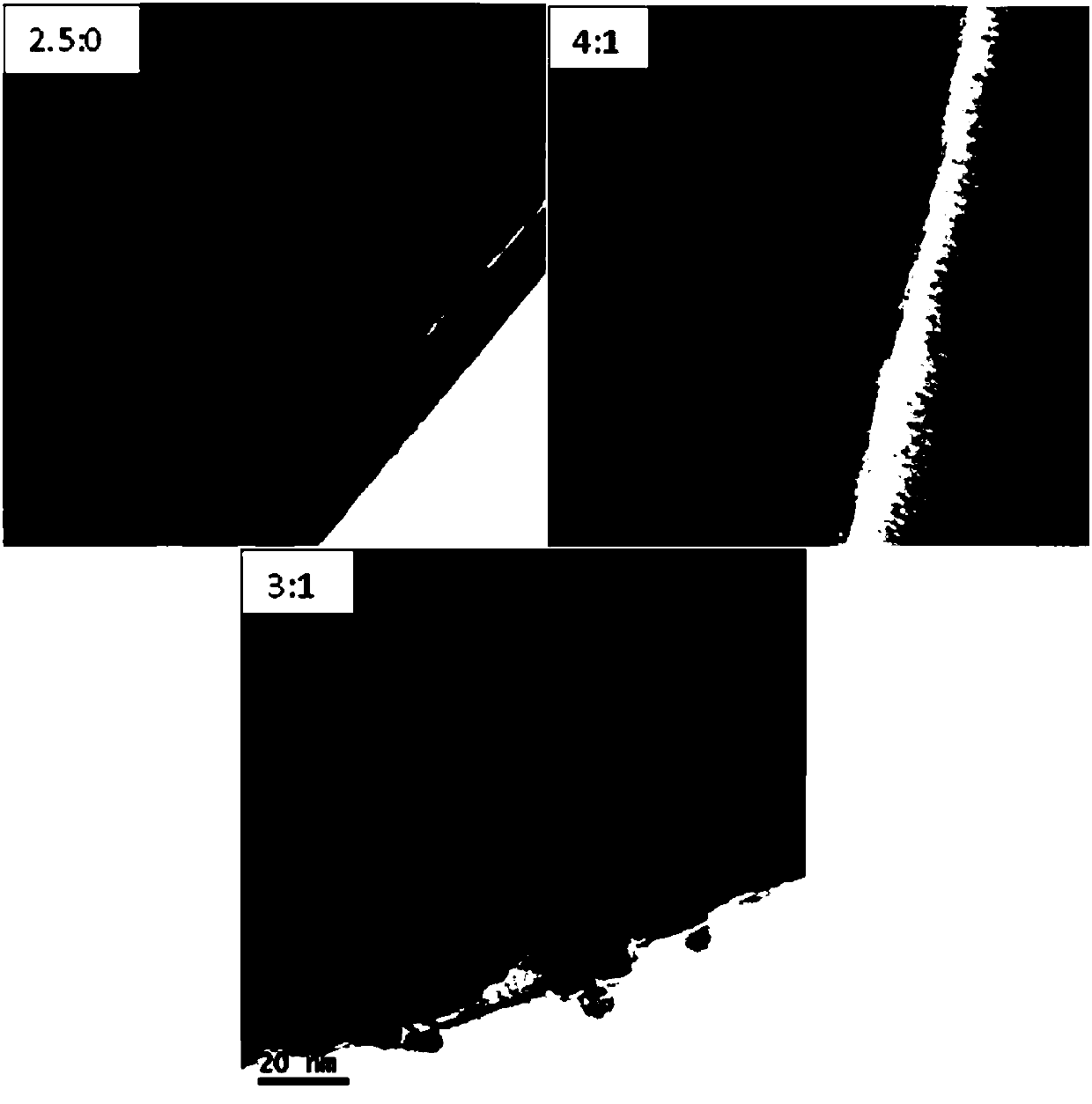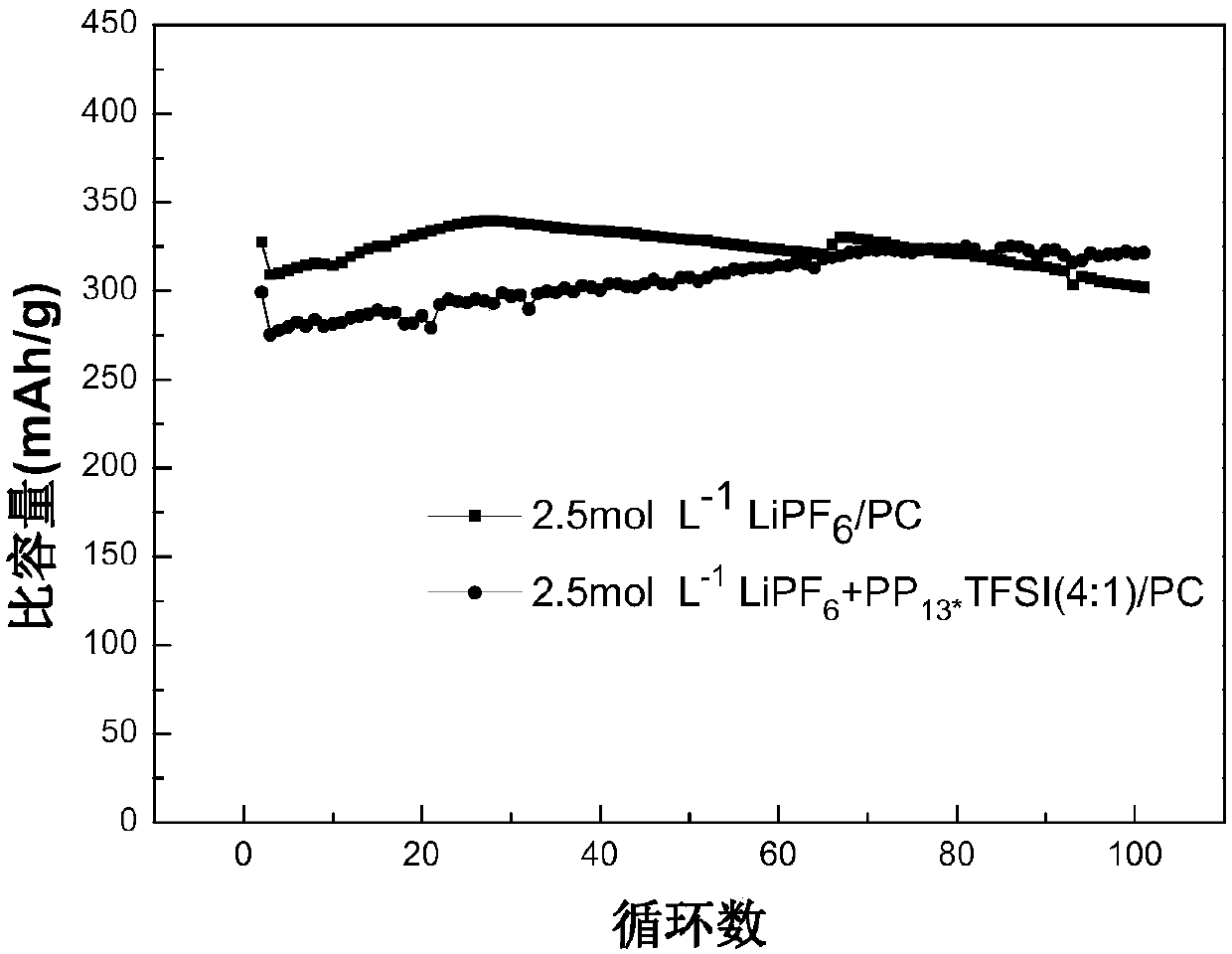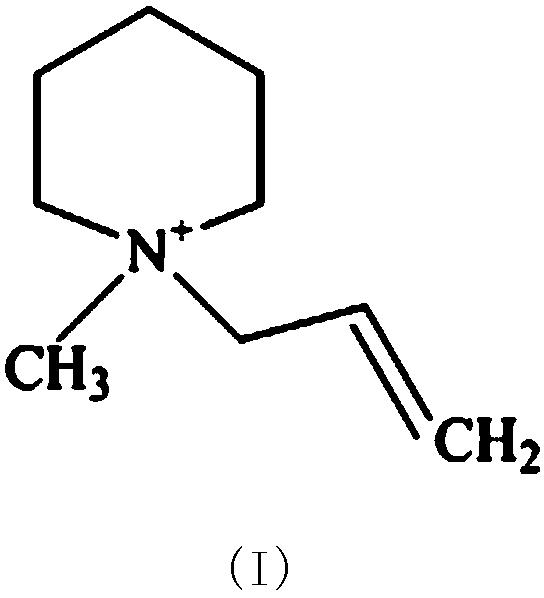Electrolyte capable of improving performance of solid electrolyte membrane on surface of graphite electrode and preparation method of electrolyte
A solid electrolyte membrane, graphite electrode technology, applied in circuits, electrical components, secondary batteries and other directions, can solve the problems affecting battery cycle efficiency, increase battery self-discharge rate, graphite layered structure damage, etc., to improve cycle performance, Reduced internal resistance and easy preparation
- Summary
- Abstract
- Description
- Claims
- Application Information
AI Technical Summary
Problems solved by technology
Method used
Image
Examples
Embodiment 1
[0030] The electrolytic solution in the present invention is prepared in a glove box, and the main components are: an organic solvent and a lithium salt. Described organic solvent is propylene carbonate (PC), and lithium salt is LiPF 6 , the molar concentration of lithium salt in the organic solvent is 2.5mol / L.
[0031] The preparation method of above-mentioned lithium ion battery electrolyte:
[0032] Weigh the stoichiometric LiPF according to the molar concentration of the electrolyte 6 , dissolved in a certain volume of PC solvent, shake well, and let stand for at least 24 hours.
[0033] The lithium-ion battery electrolyte obtained in this example was used to assemble a graphite-lithium button half-cell, and the charge-discharge cycle performance of the graphite-lithium half-cell was tested at room temperature at a rate of 0.01-2V and 0.1C. The capacity retention after 100 cycles was 92%.
Embodiment 2
[0035] The electrolytic solution in the present invention is prepared in a glove box, and the main components are: organic solvent, lithium salt, and ionic liquid. Described organic solvent is propylene carbonate (PC), and lithium salt is LiPF 6 , the ionic liquid is PP 13* TFSI, LiPF 6 and PP 13* The molar ratio of TFSI was 4:1, and the total molar concentration of lithium salt and ionic liquid in the organic solvent was 2.5mol / L.
[0036] The preparation method of above-mentioned lithium ion battery electrolyte:
[0037] Step 1, weigh the stoichiometric PP according to the molar concentration of the electrolyte and the molar ratio of the lithium salt to the ionic liquid 13* TFSI, dissolved in a certain volume of PC solvent;
[0038] Step 2, weigh the stoichiometric LiPF according to the molar concentration of the electrolyte and the molar ratio of lithium salt and ionic liquid 6 , dissolved in the mixed solution of 1);
[0039] Step 3, shake the above solution well an...
Embodiment 3
[0042] The electrolytic solution in the present invention is prepared in a glove box, and the main components are: organic solvent, lithium salt, and ionic liquid. Described organic solvent is propylene carbonate (PC), and lithium salt is LiPF 6 , the ionic liquid is PP 13* TFSI, LiPF 6 and PP 13* The molar ratio of TFSI was 3:1, and the total molar concentration of lithium salt and ionic liquid in the organic solvent was 2.5mol / L.
[0043] The preparation method of above-mentioned lithium ion battery electrolyte:
[0044] Step 1, weigh the stoichiometric PP according to the molar concentration of the electrolyte and the molar ratio of the lithium salt to the ionic liquid 13* TFSI, dissolved in a certain volume of PC solvent;
[0045] Step 2, weigh the stoichiometric LiPF according to the molar concentration of the electrolyte and the molar ratio of lithium salt and ionic liquid 6 , dissolved in the mixed solution of 1);
[0046] Step 3, shake the above solution well an...
PUM
 Login to View More
Login to View More Abstract
Description
Claims
Application Information
 Login to View More
Login to View More - R&D
- Intellectual Property
- Life Sciences
- Materials
- Tech Scout
- Unparalleled Data Quality
- Higher Quality Content
- 60% Fewer Hallucinations
Browse by: Latest US Patents, China's latest patents, Technical Efficacy Thesaurus, Application Domain, Technology Topic, Popular Technical Reports.
© 2025 PatSnap. All rights reserved.Legal|Privacy policy|Modern Slavery Act Transparency Statement|Sitemap|About US| Contact US: help@patsnap.com



